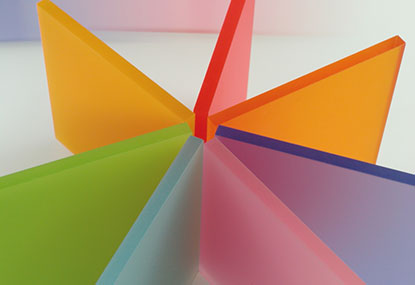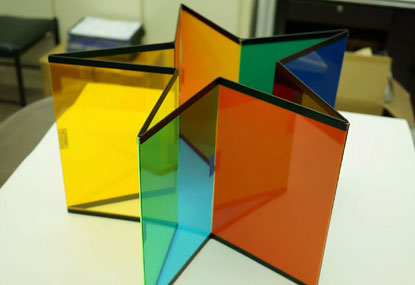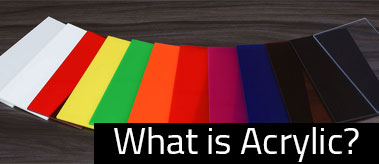ALL YOU NEED TO KNOW ABOUT ACRYLIC
ALL YOU NEED TO KNOW ABOUT ACRYLIC
Acrylic, commonly known as Plexiglass, is a versatile acrylic plastic substance that comes in a variety of colours and opacities and can be used for a variety of purposes. Acrylic is a strong, stiff, and optically clear transparent acrylic plastic with excellent strength and stiffness. Acrylic sheet is simple to produce, adheres well to adhesives and solvents, and thermoforms easily. It outperforms several other transparent polymers when it comes to weathering.
Acrylic is a man-made fabric that does not come from the natural world. Instead, acrylic fabrication is made artificially from acrylonitrile, a synthetic polymer. Acrylic resin pellets are made from acrylonitrile, which is generated from petroleum or coal-based chemicals. Acrylic is used for a number of applications in the current era and in general, which often take use of its natural transparency and the impact resistance of specific varieties. Lenses, acrylic nails, paint, security barriers, medical gadgets, LCD panels, and furniture are all examples of common applications.
Acrylic sheet Dubai exhibits glass-like qualities—clarity, brilliance, and transparency—but at half the weight and many times the impact resistance of glass. Acrylic products include lenses, acrylic paint, security barriers, medical devices, LCD screens, and acrylic furniture. Because of its clarity, it is also often used for windows, tanks, and enclosures around exhibits.


Manufacturing of Acrylic
Acrylic plastic Dubai polymers are made by reacting a monomer with a catalyst, such as methyl methacrylate. An organic peroxide is a common catalyst. The catalyst initiates the reaction and enters it to keep it going, but it does not become a component of the polymer that results.
Flat sheets, elongated shapes (rods and tubes), and moulding powder are the three types of acrylic plastics accessible. Suspension polymerization, in which the reaction takes place between microscopic droplets of the monomer suspended in a solution of water and catalyst, is occasionally used to make moulding powders. This produces polymer grains with a finely regulated molecular weight, which are ideal for moulding or extrusion.
Bulk polymerization is the method used to create acrylic plastic sheets. The monomer and catalyst are put into a mould where the reaction takes occur in this method. Bulk polymerization can be done in two ways: batch cell or continuous. The batch cell is the most prevalent because it is simple and adaptable for producing acrylic sheets in thicknesses ranging from 0.06 to 6.0 inches (0.16-15 cm) and widths ranging from 3 feet (0.9 m) to hundreds of feet. Rods and tubes can also be formed using the batch cell approach. The continuous method is more efficient and requires less effort. It is used to generate sheets with thinner thicknesses and smaller widths than the batch cell approach.
Acrylic vs Glass
Acrylic is significantly lighter than glass, weighing less than half as much. Acrylic is more durable than glass and resists strokes ten to twenty times better. As a result, when compared to glass, which quickly splits and breaks, acrylic is the clear winner in the durability discussion. Acrylic is often more expensive, depending on the type of glass. Installing glass, on the other hand, may be costly, and acrylic’s extended life expectancy can make it a more cost-effective alternative in the long term.
Acrylic lets in up to 92 percent more light than ordinary plate glass, making it optically cleaner. Clear acrylic can be produced up to 33cm thick and yet be entirely transparent!
Acrylic Uses
- Optical clarity and transparency are exceptional.
- Extremely resistant to temperature changes
- Impact resistance up to 17 times that of conventional glass
- The material is half the weight of glass and is perfect for precision machining.
- Chemically resistant to a wide range of substances
The rate of consumption of acrylic polymers has increased by roughly 10% on a yearly basis. A 5-percent yearly growth rate is expected in the future. Despite the fact that acrylic polymers are one of the oldest plastic materials in use today, they still have the optical clarity and weather resilience that make them the material of choice for a wide range of applications.

